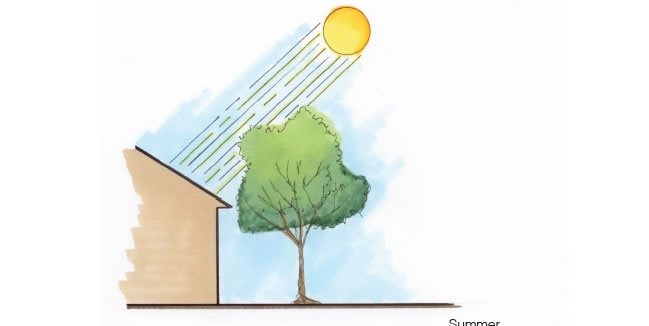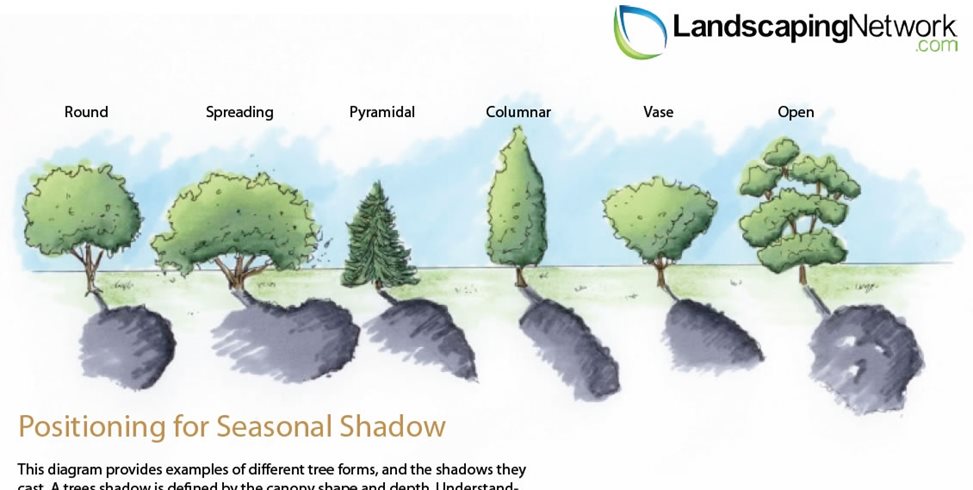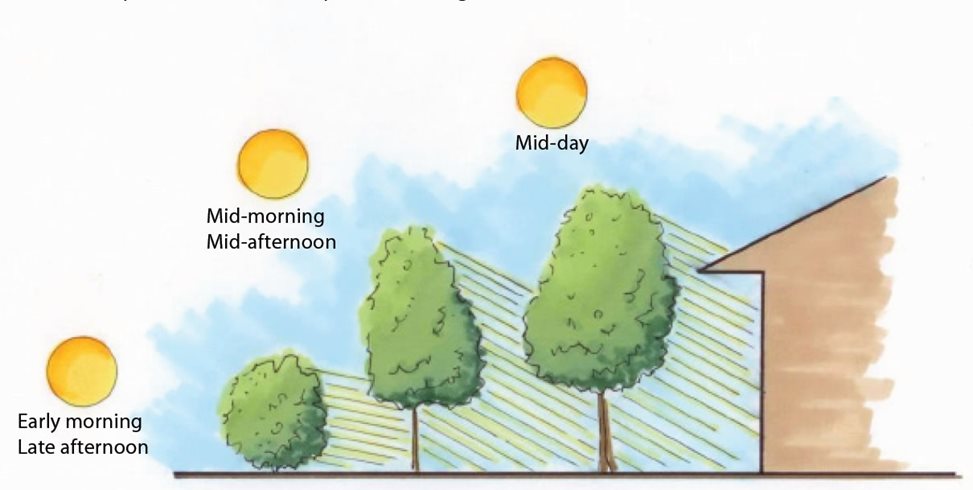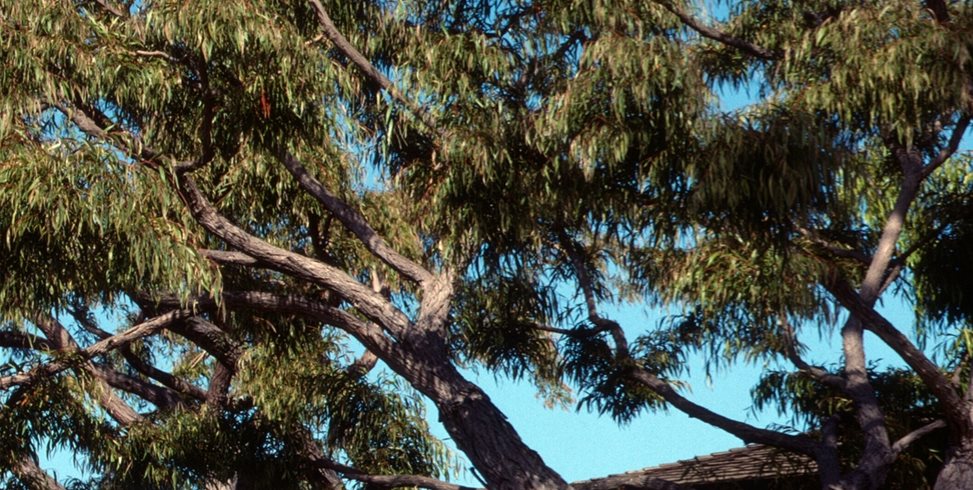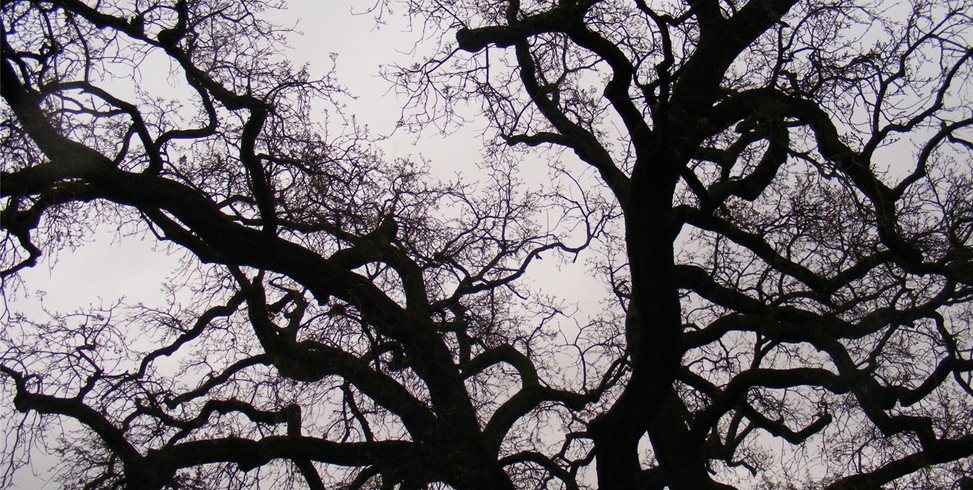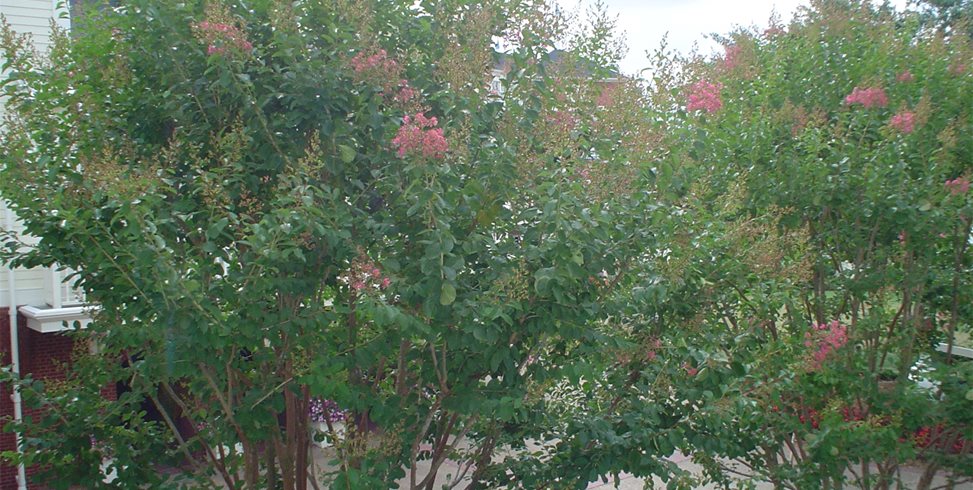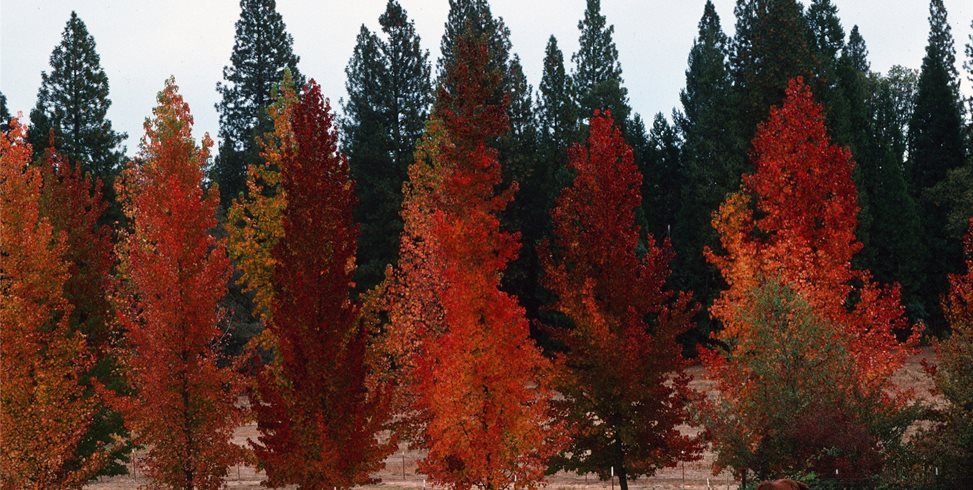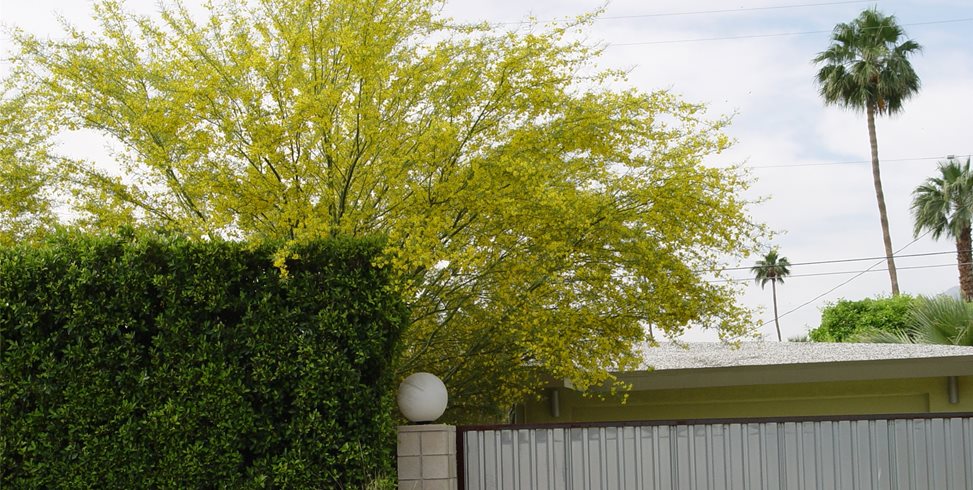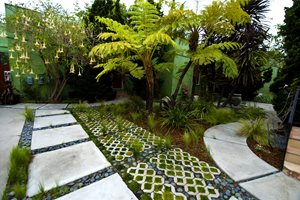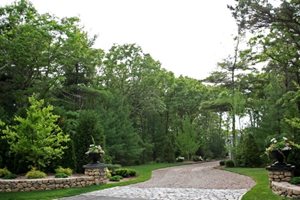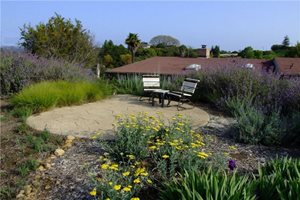Passive Solar Landscaping for Energy Efficiency
How to use trees to reduce the cost of heating and cooling your homeIf your home is designed for passive solar heating and cooling, its orientation on the lot is already pre-determined by the architect. This is not typical of the average home though, because lot layout and house positioning is governed by the builder's profit model, not energy conservation. For these homes, landscape design that contributes to cooling in summer and heating in winter can still have a significant impact. The pivotal factor is the selection and location of trees that are compatible with passive solar homes and offer similar benefits to standard homes. In short, trees well designed into the landscape can save you energy dollars.
Basic Orientation
A surprising number of homeowners lack awareness of solar orientation, which is critical to all design decisions. The following descriptions of how sun impacts your house will help you determine its exact positioning relative to the four cardinal directions. If you have a compass, that helps too.
East:
The east side of the house will receive direct morning sun but will be shaded in the afternoon by the shadow of the building itself.West:
The west side of the house will be shaded in the morning but fully exposed to the hot afternoon sun.South:
The south side of the house is most critical to passive solar design because it receives the most sunlight throughout the day but never as intensely as the east or west sides.North:
The north facing side of the house is almost always in shade.
Summer solstice:
June 21st (sun highest in the sky)Autumn equinox:
September 21st (half way between high and low point)Winter solstice:
December 21st (sun lowest in the sky)Spring equinox:
March 21st (half way between low and high point)
Winter and Summer Sun Position
Everyone knows there are more hours of daylight in the summer months than in the winter. This is because the sun changes position in the sky from season to season. The basic orientation of a home remains the same, but the sun will move northward in the winter and southward during the summer to change the positions where its rays impact the building. This change is divided into four quarterly seasons. When designing for energy conservation, use the two solstice dates as the most important criteria, when the greatest amount of heating and cooling energy will be used. These are also the dates that an architect uses for his passive solar calculations.
Fundamentals of Passive Solar Architecture
Passive solar architecture does not depend on solar panels. It is a design technique that utilizes the sun's energy to naturally heat a home during winter and keep it cooler in the summer. The criteria is based on the position of the sun at the winter solstice when it is low in the southern sky. This generates rays that directly strike the south facing side of a building. When that side is glass, the energy moves through to warm the interior spaces.
That same passive solar home will function differently in the summer. In June the sun's arc occurs further north, shining down on the roof rather than the south windows. In summer the east and west sides of the building will receive much more direct exposure in the morning and afternoon. Tree planting here provides welcome shade at that time of day.
- Tree is adapted to local extremes of winter cold and summer heat.
- Tree is deciduous for shade in summer and sun in winter.
- Canopy is sufficiently dense to offer optimal shading potential.
- Open branching structure in the winter for maximum solar access.
- Foliage, flowers or seed pods must not linger overly long on the branches.
- Root system is deep to provide anchorage in extreme weather.
- Canopy is sized for the space and necessary shadow depth.
- Height is sufficient to shade both first and second stories.
- Water needs are consistent with local availability.
- Tree is not vulnerable to any major pests or diseases.
Choosing Trees as Tools of Energy Conservation
Planting for energy conservation is valuable to both a passive solar home and a traditional house. Once again, the goal is to provide sun in the winter and shade in the summer. To achieve this, any tree you select should conform to the following criteria.
Deciduous vs evergreen:
Deciduous trees are perfectly designed by nature to offer direct solar benefits. They leaf out to provide shade in the summer, then shed their leaves to let the sun shine in during the winter.Branch and twig density and winter sun filtration:
When a tree loses its leaves for the winter, its branching and twig structure is fully visible. Some trees produce a very open structure that allows light and solar energy to shine through. These are ideal for passive solar and energy conservation. Other trees that produce a great deal of twiggy growth are less beneficial because each additional twig compromises proportionately more light.Height, diameter, form:
For a tree to function as an energy conservation device, it must be sized to meet the needs of the house itself. A two story house will require a much taller tree than is needed for a single story. That means that the upper half of the tree must be wide enough to cast significant shadow. The ranch house style home tends to be long and low, so a tree to shade its walls during the summer will require a wide canopy that's not particularly tall. The size of the tree also designates how far from the structure it should be planted in order to obtain optimal benefits and avoid problems with branches and roots interfering with the structure.Positioning for seasonal shadow:
Homes that require trees to protect against morning and afternoon sun in the summer will depend on the shadow a tree casts. This shadow is a combination of the tree canopy shape and depth. Fine tuning shadows can shade walls and windows at the most crucial hours of the day as the angle of the sun changes.Arrangement:
Any tree used for energy conservation should be considered part of a much larger landscape. This is not just a matter of placing a single tree in optimal solar positions. It's about creating a landscape that features a wide range of plants that group with these conservation trees to make the whole composition more attractive. Groves are a perfect way to provide solutions that give you opportunities to use varying species to ensure diversity, which protects this valuable investment from unexpected losses due to storm, disease or pests.

 Backyards
Backyards
 Front Yards
Front Yards

